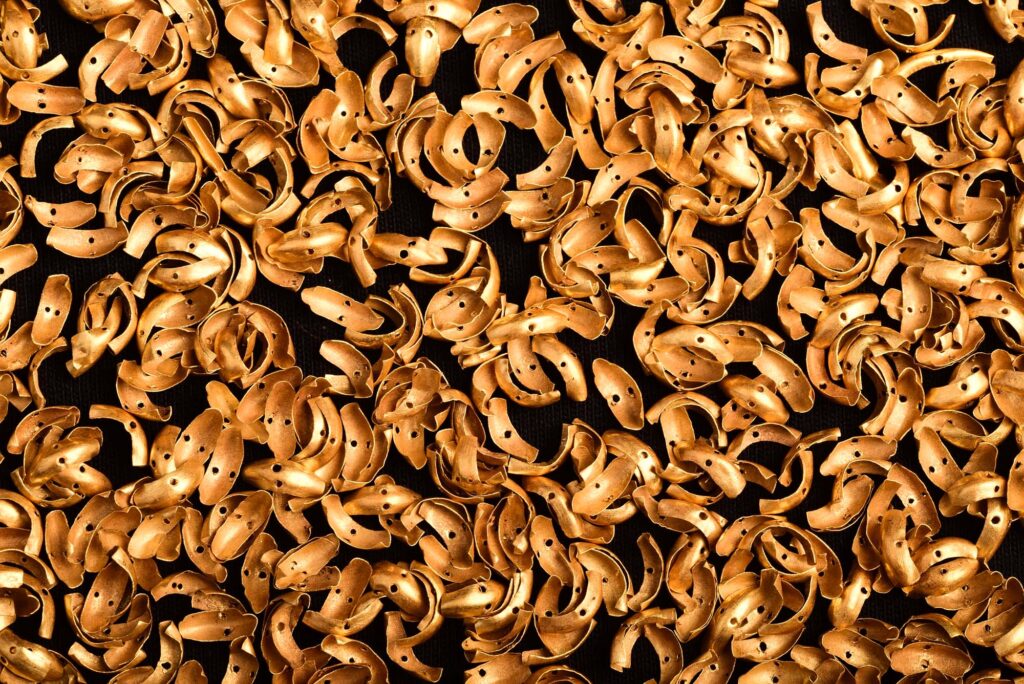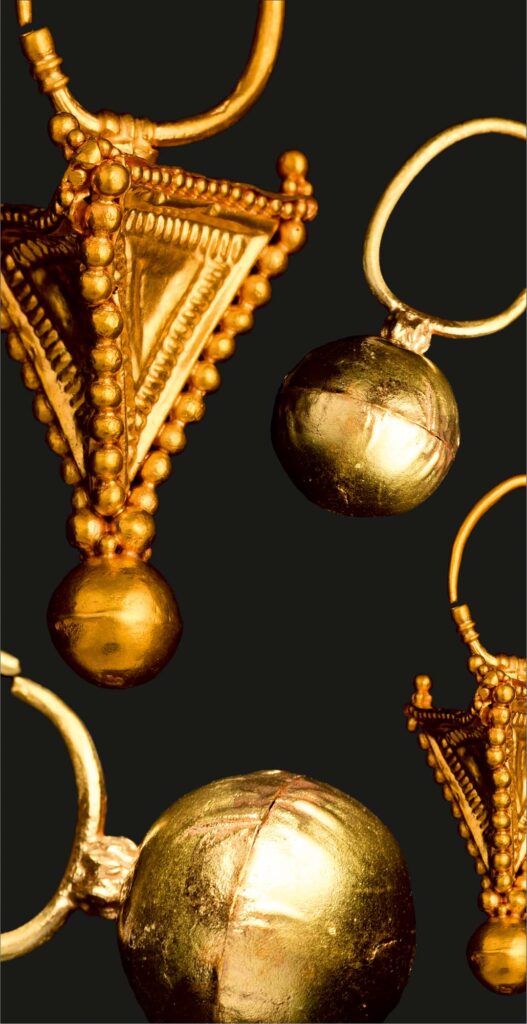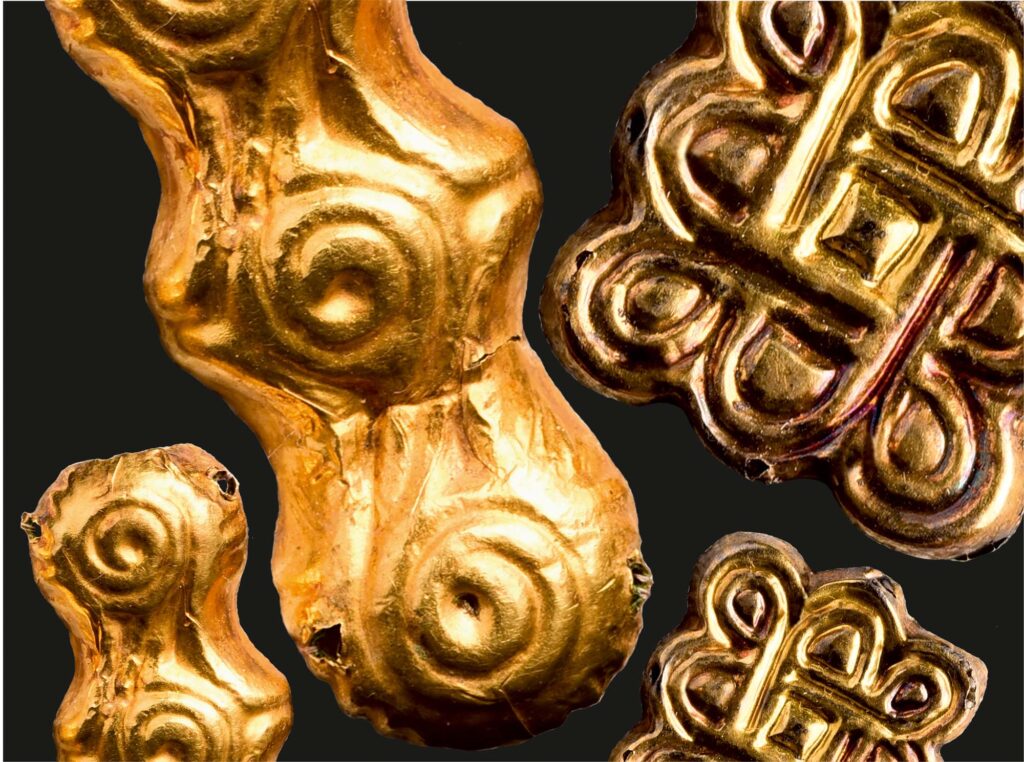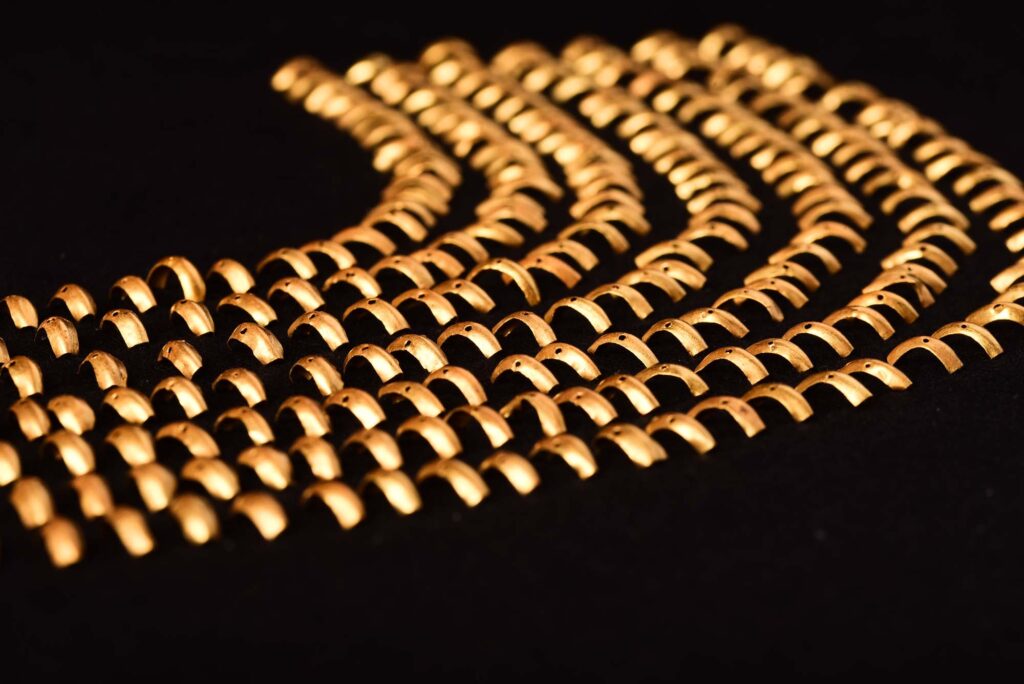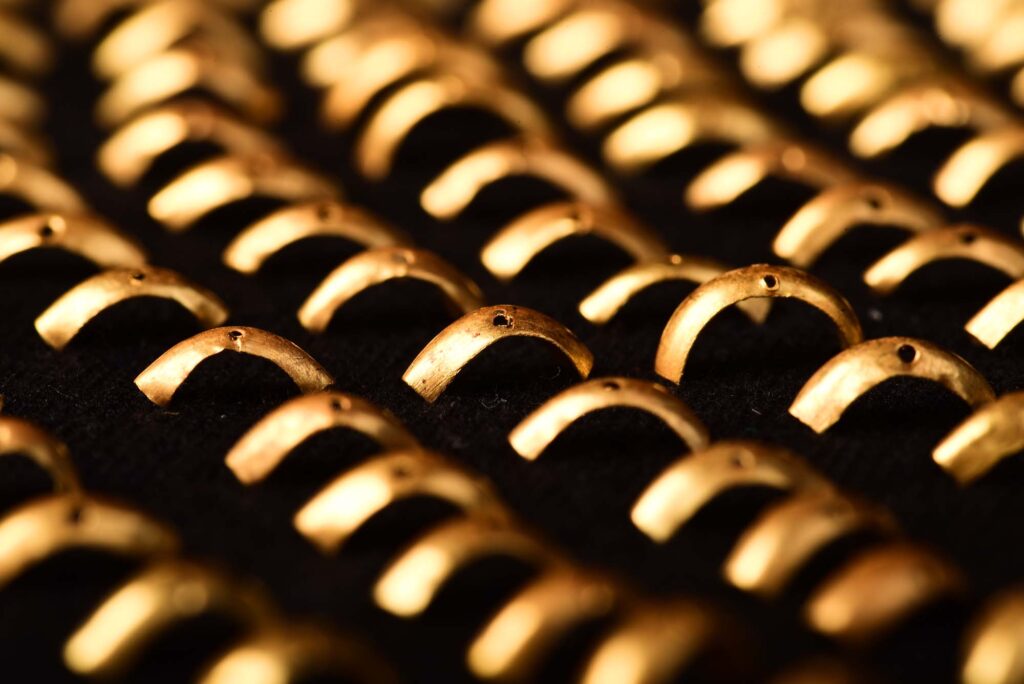Visitors to the Déri Museum can see the latest archaeological treasure, finds of gold artifacts of the museum’s Archaeological collection.
One of the displayed treasures was found on the northern border of the village of Bojt where the route of the M4 motorway passed through. The gold treasure of 1768 pieces was hidden in a small, hand-shaped mug from the early Bronze Age and it was found on 1st December 2017 during the M4 motorway excavations.
The survival of the treasure is a great fortune – almost a miracle -because it was barely 30-40 cm from today’s surface. The gold was not destroyed by agricultural cultivation, and the humus-removal works also left it untouched. One of its special features is that the small ornaments that make up the treasure represent a completely new type of object, hitherto unknown to domestic and international archaeological research.
The tiny, semicircular curved, sewn-on plates or sequins were presumably used to decorate a special dress, headdress, or even a textile belt. The non-ordinary wear could either have been used by a high-ranking woman (for example, the ceremonial wear of a priestess) or perhaps intended as a ritual gift offered to the goddess revered by the people who lived here at the time.
The other collection is from a pre-construction excavation from the center of Debrecen on 25th June 2020. The gold piece is from the late Bronze Age, BC, between 1200 and 900. The valuable artifact collection, weighing almost 10 decagrams and brought to the surface with the help of instrumental discovery, consists of three parts: in addition to a small, rectangular gold block there are two narrow “skeins” folded from twisted gold ribbons. Presumably, it may have been the raw material supply of a Bronze Age goldsmith, which may have been hidden in a leather or textile pot for reasons unknown to us today.
Jewelry from the Early Avar period, the first half of the 7th century
Another theme of the exhibition is the presentation of jewelry dating to the early Avar period, the first half of the 7th century.
Precious metal-bearing artifacts found on the route of the M35 motorway, Derecske – Kösely (Tekeres) are especially important because it is the first find of its type in Hajdú-Bihar county, although examples are known more widely in small numbers in the Carpathian Basin.
The objects, although closely related to Byzantine-rooted headdresses, were made in local workshops based on embossing patterns found in Avar goldsmith tombs. The excavated graves of two very rich female in close proximity to each other at the Derecske site – a little girl around 6-8 years old (“Danuta”) and a young woman around 18-20 years old (“Malvin”) – give a glimpse into the costumes of wealth early Avar (high-class) women.
In addition to these artifacts, another rare item type, – the silver plate bead, was also found in the older woman’s grave. These jewels were soldered together from two pressed hemispheres. It formed a necklace with glass-paste beads or with a pierced Byzantine gold solidus between Heraclius and Heraclius Constantinus 616-625 as seen in the graves.
The gold earrings on display were also found during the M4 motorway excavation. Archaeologists have found six gold earrings in 12 early Avar excavated graves in 2018 at the Gulya Pasture South site. Five Mongol adult women were buried in a tomb with a pair of gold earrings, while the sixth was the robbed tomb of an older man with Mongolian anthropological features, from which comes a single tiny piece decorated with four granulations. The latter was presumably worn not in her ears but in her hair.
The earrings on display faithfully present the alloying technique of the era. This characteristic decorative technique can be traced back to ancient, Byzantine traditions, in which the Avars were well acquainted.
The exhibition “Latest Gold Treasures” can be visited until 31 December 2020 in Museum Déri.
